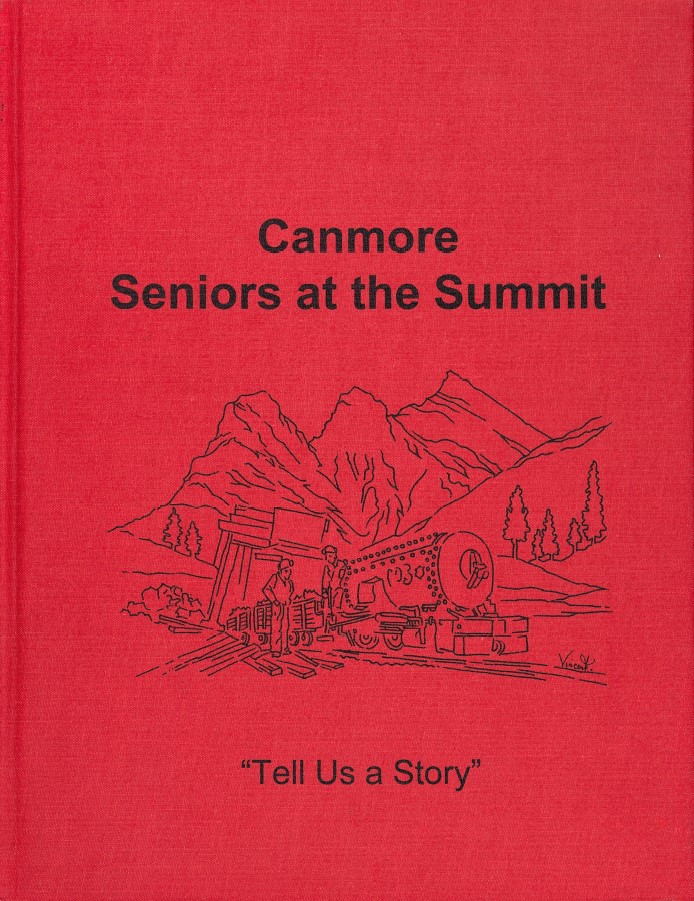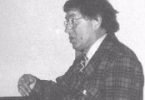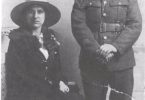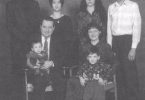A call went out to Europe for settlers to fill the empty prairies and provide commerce for the newly completed Canadian Pacific Railway across Canada.
My father knew that living under the existing feudal system in Ukraine, ruled by Austria, held no hope for a decent future for his family. He was determined to come to Canada for its offer of land and freedom, but because he was a conscript in the Austrian army he had to use unorthodox measures to get his family out but that’s another story.
In 1898, after reaching Edmonton, several families together rafted down the North Saskatchewan River to their homesteads. My mother, with two small children, was left in her new home, a sod-roofed dugout in the river bank with a blanket for a door, while my father went to work at building the railway between Edmonton and Calgary. Life was very hard but the immigrant families helped each other and gradually a community grew around first a church and later a school.
I was born in 1917 and was the only one in the family who escaped being stricken by the influenza epidemic at the end of World War I, which killed thousands all over the world, including my sister, age seventeen, and a brother, age nineteen.
Attending the district school was a happy time for me. We played games while walking three miles to school in the summer and drove a horse and sleigh in winter. After completing grade twelve, the last three years living in a town ten miles from home, I stayed on the farm for a year. Provincial regulations required that a student in teacher training must be eighteen to graduate and I would have been only seventeen. My father had planned that I would spend that year in other courses at the university but those were dashed when a terrific hail storm completely destroyed our crops, just as harvesting began.
However, the year-in-waiting was enjoyable. Being a musical family, we took part in ethnic dances and concerts, presented in our community and neighbouring halls. Against my wishes, the Department of Education sent me to Camrose for my teacher training but a couple of weeks after the sessions began, the polio epidemic of 1935 forced the closing of all schools. By the time the polio scare was over, I had, with several letters, persuaded the Department to allow me transfer to Edmonton Normal School and from there, I graduated with a temporary first-class certificate.
There was an over-supply of teachers in our area of the province when I graduated but found a position with a ranching family to teach their two children on an isolated dryland ranch some distance from Brooks, Alberta. For this, I received $10.00 a month plus room and board so I had to borrow money to attend Calgary Normal School in July and August to take two elective courses to earn my permanent certificate. That institution later became S.A.I.T.
Letters of application did not get me a teaching position and I believed my foreign-sounding name was a handicap. I therefore had my name changed legally, after asking my father’s opinion, and armed with my new name, I was accepted at the first position I applied for.
During three more years of teaching, I married, while my salary rose to $80.00 a month. It had to be collected at an office in Calgary, and I had to dodge strong hints about a married woman taking a job away from a single teacher.
We then left the dairy farm which we were trying to pay for by milking fifty cows and hauling the cream to a creamery in Calgary, barely making any money for all our hard work growing feed for the cows.
We put together a small sawmill and gradually added more machinery and hired more help as we moved on to the Dominion Experimental Station above the internment camp near Barrier Dam. While I cooked for a crew of lumberjacks, I also taught my two sons because there was no school nearby. Farther up the Kananaskis Valley, Ribbon Creek School had been closed and even though there was a pile of desks to be hauled away, we were not granted our request for the desks because we were not taxpayers to any school district.
As we ran out of timber, we had to choose between moving farther for more timber, or getting our boys to a town for school. They were halfway through grade nine and had never been in school, when we built a home in Canmore. My husband sold his sawmill, except for a bulldozer, and since that was the only heavy machinery in Canmore in 1955, and growth was just beginning, he did much of the landscaping and digging of basements. He and the two boys worked on the building of the Trans Canada Highway in this area, each working an eight-hour shift. My husband’s last big job with the bulldozer was for the twinning of the C.P.R. tracks west of Lake Louise. In semi-retirement, Ken went to work on the Banff East Gate where he remained for eleven years.
The School Board in Canmore was scraping the bottom of the barrel for teachers when we moved here and I was persuaded to join the staff, first as a substitute, but such was the demand for teachers that I stayed for twenty years. Our daughter, Penny, was born in the old Canmore Hospital and took all her schooling here, along with dance training at the Banff Centre for the Arts. This prepared her for her present position of stage manager and production manager with Toronto and Montreal dance groups. This work has taken her all over the world.
Our boys graduated from Canmore High School in 1959. Austin then took courses in Electronics and spent several years with Calgary Power (now TransAlta) in Banff, Bow Island and other small towns before settling in Calgary. He later joined the city electric light department where his skill and devotion to duty earned recognition. A plaque on a lamp post on the north-east corner of Louise Bridge pays tribute to the innovative work he did, renewing the lighting as close as possible to its original state when the bridge was refurbished a few years ago. Austin has two daughters and a son.
George joined the Canadian Navy and received his commission in 1962. His training in refitting a frigate and rewiring the submarine Auguste Picard prepared him for the development of a remote-controlled unmanned submarine which he used in subsea work in the Arctic, the North Sea, Persian Gulf, South America and both North American coasts. George has twin daughters.
In retirement, I have been busier than ever. I spent ten years in the Bow Valley Literacy Group. I write income tax returns for seniors, one year having fifteen clients but fewer now because more people volunteer to give this help. Meals-on-Wheels was interesting and I work with the Ladies’ Auxiliary at the Hospital Tuck Shop. I visit with several seniors older than myself and I act as hostess at the North West Mounted Police Barracks Museum, and have served on the Board of the Seniors Association. Since my husband passed away in 1992, I continue, on my own, the organic gardening he began on our large lot in Harvie Heights. I have six grandchildren and two great-grandchildren and with senior activities, the weekly luncheon with friends, my favourite hobbies of reading and playing scrabble, the days are too short for all I enjoy doing.
In Canmore Seniors at the Summit, ed. Canmore Seniors Association, 2000, p. 214-216.








